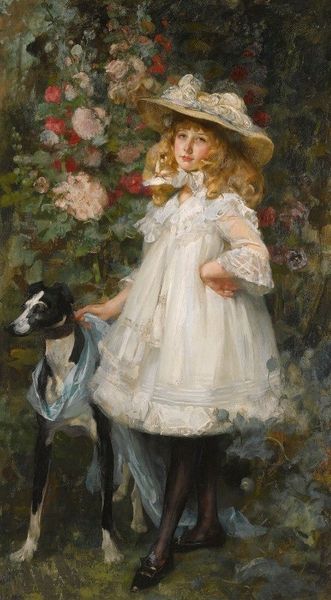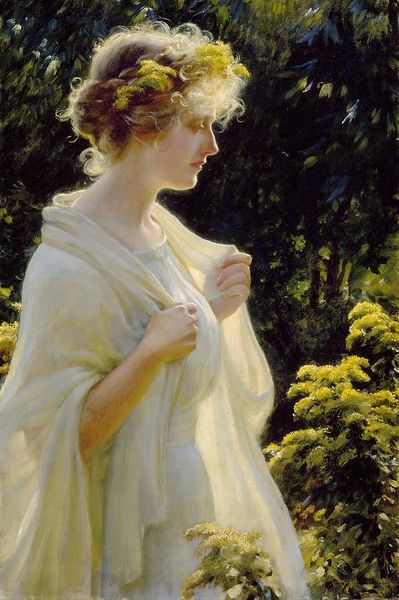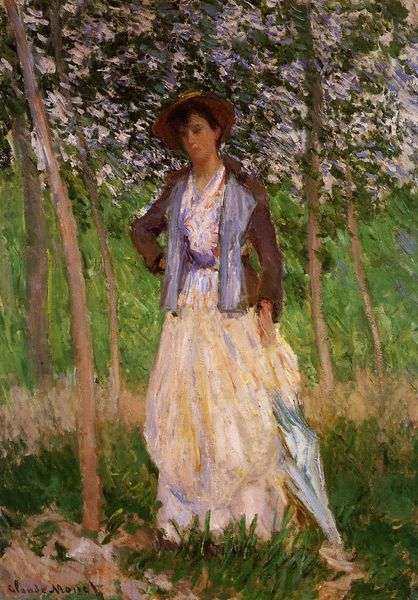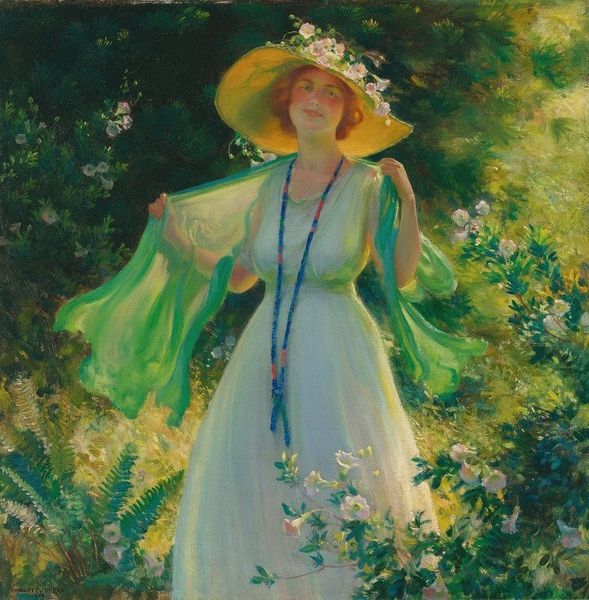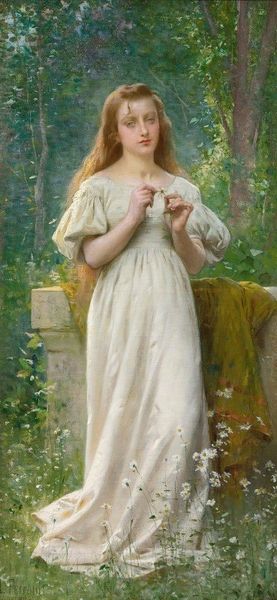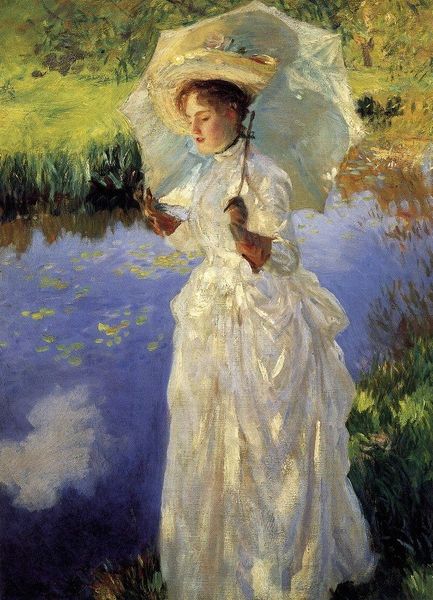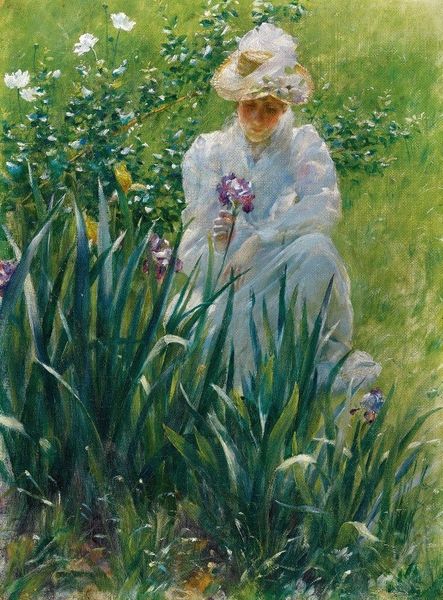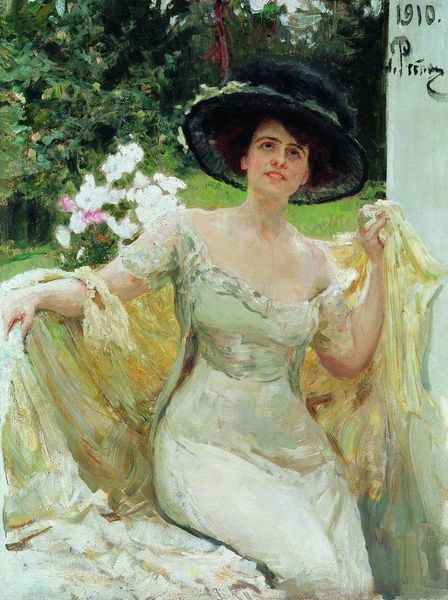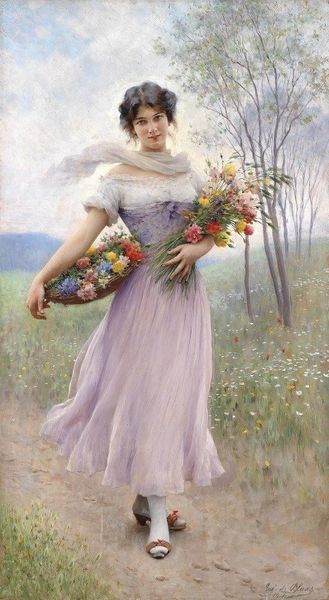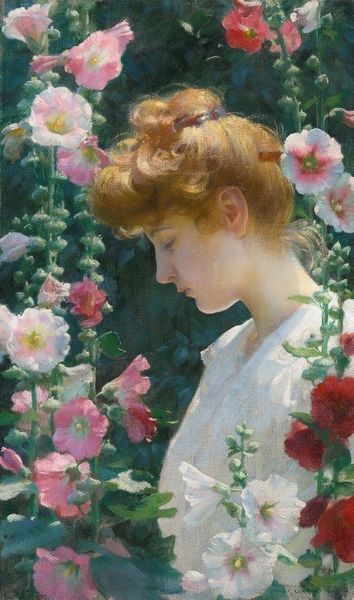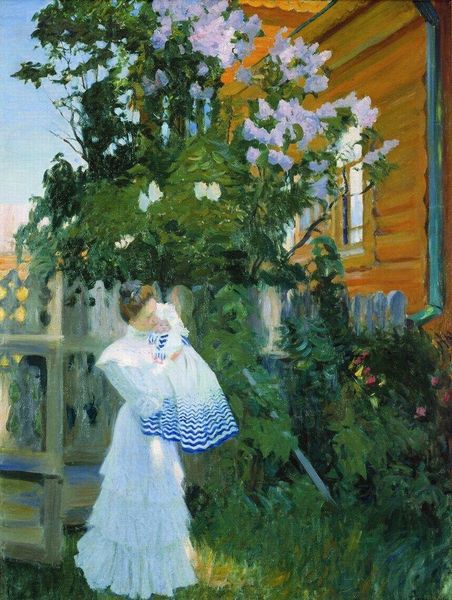
painting, plein-air, oil-paint
#
portrait
#
figurative
#
painting
#
impressionism
#
plein-air
#
oil-paint
#
landscape
#
figuration
#
genre-painting
Copyright: Public Domain: Artvee
Editor: This is Albert Edelfelt's "Au Jardin," painted in 1882, using oil. The scene is just bathed in sunlight. There’s such innocence in the girl's pose and dress. How do you interpret this work beyond just a simple portrait? Curator: Well, let’s consider the socio-political context. Late 19th century Europe witnessed a surge in paintings depicting childhood innocence, often idealizing the vulnerability of young girls. In what ways might this romanticization have served as a means of control or containment, especially when thinking about emerging feminist discourse? Editor: That's an interesting angle. I hadn’t thought about the artist's potential role in shaping perceptions of women so early in life. Are you suggesting the idyllic garden scene isn’t as innocent as it looks? Curator: The setting, the garden itself, becomes a symbolic space. Consider its function both as a place of natural beauty and, historically, as a controlled, cultivated environment. In that sense, could this setting suggest the careful cultivation of gender roles and expectations for young girls? Editor: So, you're not just looking at the aesthetic, but also at what it says about the limitations placed on women, even in childhood? The flowers she holds, her white dress, they're not just pretty, but symbols? Curator: Exactly. And consider the viewer’s position. Are we invited into the garden, or are we observing from a distance? This placement can speak volumes about the dynamics of power and access related to the subject’s unfolding identity. Editor: That gives me a lot to think about – I usually just considered impressionism for its visual qualities. Curator: It's crucial to understand art within a broader framework, recognizing how cultural and historical factors influence artistic choices and interpretative potential. Editor: Thanks, I am now viewing the painting from a completely new perspective!
Comments
No comments
Be the first to comment and join the conversation on the ultimate creative platform.
